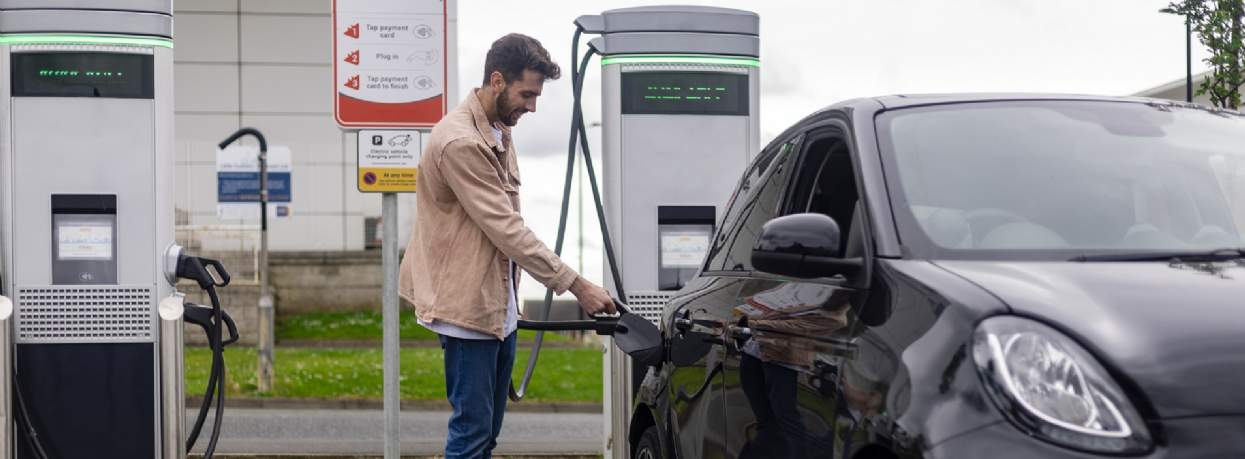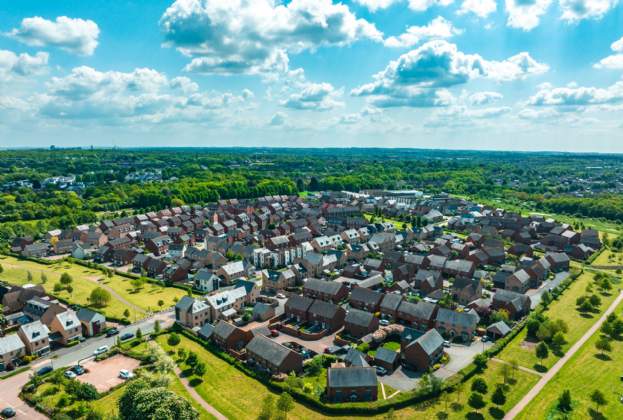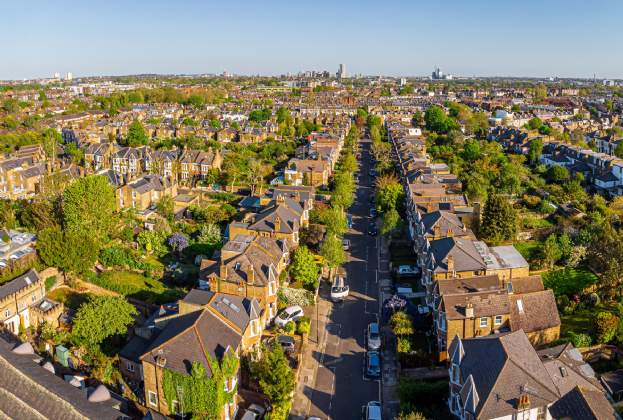There is an urgent need to expand electric vehicle (EV) public charging infrastructure in the UK, particularly at a neighbourhood level. Without it, a lack of appropriate facilities is increasingly likely to dampen EV sales.
We need a step change in EV charging provision
At present there are around 37 million cars and vans in the UK. Once all vehicles are electric, we estimate around 5 million public charging points will be required (compared to around 8,400 petrol filling stations today). There are currently in the region of 59,600 charging points in the UK meaning the requirement will be equivalent to a 3,600% increase, and an almost hundred-fold step up over around 10-15 years. This is fundamentally different to more mature markets that might grow at say 5-10% per year. Even if fewer charging points are needed and/or the market rate of growth in EV sales slows down at times (as is currently the case) we estimate the scale of the challenge will remain substantial.
The government and local councils, such as the Greater London Authority (GLA), have produced various EV charging infrastructure strategies. While these often include useful data and insights and sensible initiatives, they do not sufficiently take on board the need to plan for rapid market growth.
Key questions are what type of charging infrastructure is needed, where, when and on what scale? The answer is informed by the characteristics of the market.
The ideal location for people to charge their cars is usually at home or work
Unlike petrol filling stations, people can charge their vehicles anywhere there is a suitable power supply, and they do not need to be with their cars while charging. This greater flexibility has fundamental implications. Our analysis concluded that the key variables relevant to assessing public charge point demand are:
- Dwell time and speed of charging
- Cost of charging
- Availability, convenience and consistency of information and processes for charging
- Relationship to where cars spend most of their non-use time, i.e. at the owner’s home or place of work, and the charging opportunities at these locations
From a EV owner’s perspective, the ideal location is where they leave their car for an extended period of time, and where electricity prices are low. So this usually means at home if they are able to connect to their domestic electricity supply and slow-charge overnight. It can also mean at work, if parking is available and ideally where employers offer free/cheap charging.
Characteristics affecting the scale of the charging market
The scale, nature and location of markets for public EV charging will depend on characteristics including:
- EV car ownership rates (+ve correlation)
- The availability of off-street parking for consumers at home and work (-ve correlation)
- The price and time/convenience differential between fast, medium and slow charging
- Evolving technology, e.g. battery capacity
- Regulatory framework, timing of new regulatory requirements and responsiveness of public sector agencies
Fast charging is usually a last resort and is a niche market
This context has significant implications for the market for charging away from home/work which is a second-best option for the consumer, being usually more expensive and less convenient. This includes typical fast charging infrastructure.
Reasons why people will nevertheless use fast non-home/work charging infrastructure include:
- No access to off-street parking at home and/or work
- Slow/medium on-street EV charging in the streets around home is limited
- Longer trips requiring charging at motorway services and/or hotels
Our analysis finds that key fast and medium speed charging market opportunities include:
- Motorway service stations (together with an enhanced service and food and beverage offer associated with a longer dwell time)
- Parking locations in city centres, including municipal car parks, private car parks, shopping centres and supermarkets
- Suburban transport hubs, park & ride and out-of-town retail and visitor attraction locations
- Higher-density urban residential and mixed-use development
Another key dimension for fast EV charging markets in particular is the need to be in locations with spare electricity/grid capacity and/or on-site/near-site generation and storage (batteries etc) for private wire/peak demand management solutions.
The main market: local medium/slow charging infrastructure
Given drivers’ first choice will be to charge at home or work, we anticipate that medium/slow charging will be the largest market in terms of volume of chargers as it is most efficient and cost-effective. Medium/slow speed charging market opportunities are greatest in locations like:
- Residential streets with limited off-street parking. Solutions include lamp-post charging points and, if proved to be viable and practical, ducted charging channels across public pavements to individual properties. (This is being piloted by, for example, Oxford City Council)
- Industrial estates and business parks. Industrial estates in particular capture markets for both vans and small lorries as well as industrial workers, who will tend to drive to work and will tend to have fewer options for charging at home
- Urban extensions
- Hotels, particularly larger ones in more remote locations
These markets are currently receiving less attention than the fast charging market, though interest is growing. Provision for these markets is critical to prevent the UK EV market stalling.
Challenges and issues
The current market is not scaling up quickly enough and is facing a number of challenges. These include:
- The need for local authorities to substantially step up commissioning and provision of local charging infrastructure
- The need to change the service delivery model for low/medium speed charging so there are appropriate incentives to maintain and ensure the reliability of this infrastructure
- The need for more consistency and transparency in charging infrastructure services, including pricing and standardised sign-in processes
- The need to explore and roll out more innovative solutions, including for example pavement duct charging channels
- The need to expand grid and low carbon energy capacity, including making provision for local demand
- The need for more sophisticated models and estimation of demand hotspots. High EV ownership is not necessarily an indication of high demand for public EV charging as wealthier people will tend to purchase EVs and will tend to have private drives and the option to charge at home. More detailed market analysis is needed to anticipate where emerging hotspots are going to be
- Issues over equity. Wealthier people will tend to have better access to lower cost charging at home (including lower VAT rates for home electricity) than less well-off people
If these issues are not addressed there’s a risk people will see EVs as inconvenient, expensive and unreliable to charge. Cross-sector collaboration is needed to pool knowledge and insight in order to deliver the infrastructure that will ultimately be required.
Further information
Contact Rory Brooke or Luisa Mostarda

.jpg)


.jpg)

(2).jpg)
(1).jpg)

.jpg)
